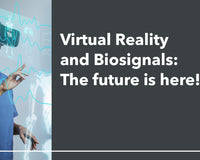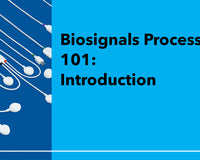"Human behavior research" sounds like something you'd only do in a white lab coat surrounded by brain scanners and complex charts. But the truth is, with today’s biosignal technology and with powerful analysis tools from anyone can explore what’s going on under the surface.
Whether you’re a researcher, a UX designer, or just someone curious about why your heart races during Zoom calls, these three experiments are simple, fun, and actually meaningful.
1. Who Really Likes Your Playlist?
Music is emotional — and biosignals can prove it.
Try This: Hook up a GSR sensor (Galvanic Skin Response) to a few friends or coworkers. Play a variety of songs: classical, metal, pop, lo-fi beats. Monitor skin conductance in real-time via iMotions.
What You’ll Learn: Even if someone says they “like everything,” their autonomic nervous system may disagree. Peaks in GSR could indicate emotional arousal (positive or negative), revealing what actually resonates — or horrifies.

2. The Coffee vs. Monday Morning Challenge
It’s Monday. You haven’t had your coffee. But how much does caffeine really change your body?
Try This: Set up ECG (heart rate) and facial expression analysis with PLUX + iMotions. Record a baseline before coffee, then again 10–15 minutes after your favorite brew.
What You’ll Learn: Caffeine impacts your sympathetic nervous system. Expect increased heart rate, reduced variability, and maybe even more expressive facial features (yes, the "dead-eyed stare" fades). You’ll have the biosignals to prove that no one is truly “fine” pre-coffee.

3. Who’s Lying in Your Zoom Call?
You’re in a video call. The boss says, “Let’s go around and share our progress.” Panic mode: activated.
Try This: Use facial emotion recognition and ECG monitoring to track changes during group meetings. Watch for signs of stress, surprise, or the classic “fake smile” as people try to stay calm under pressure.
What You’ll Learn: Facial microexpressions and cardiac activity don’t lie. You’ll spot who’s confident and who’s scrambling for excuses. It’s not about judgment, it’s about learning how people respond to social pressure.

Why This Matters (Beyond the Laughs)
These experiments may sound playful, but the technology behind them is incredibly powerful. With PLUX biosignal sensors and the iMotions research platform, you get access to:
- High-resolution physiological data (EMG, ECG, EDA, and more)
- Real-time, synchronized multimodal analysis
- Scalable applications across neuroscience, psychology, UX/HCI, consumer research, and more
You don’t need a massive lab setup. You need the right tools and a little curiosity.
Ready to Try It?
Whether you're designing a new product, testing emotional responses, or just curious about what makes people tick (or sweat), PLUX + iMotions let you explore real-time human behavior with scientific precision — and a little bit of fun.
👉Discover the PLUX + iMotions Integration










